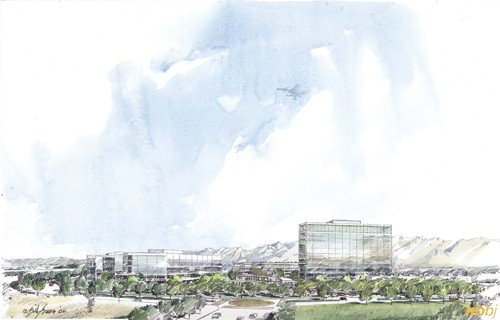After eight years of planning, construction on the Arizona Bioscience Park will begin following a ground-breaking event themed “”Destination Discovery — A World of New Ideas”” to be held Friday from 1:30 to 3 p.m.
The Bio Park, which is to be located at the southwest corner of 36th Street and Kino Parkway, seeks to provide the infrastructure, amenities and environment to attract and grow technology companies in the area of biosciences, officials said. The park is part of a larger effort to build a more vibrant and active bioscience industry in Arizona.
“”The park will allow us to meet facility requirements,”” said Associate Vice President of Arizona’s Office of University Research Parks and CEO of the Arizona Bioscience Park Bruce Wright. “”Arizona is deficient in bioscience requirements that companies need, and this park will provide a place to work so companies that use Arizona technology don’t have to move to places like San Diego to operate companies.””
Members of the university’s bioscience community raised concerns eight years ago that the UA Science and Technology Park, located at 9070 S. Rita Rd., was too far from campus.
“”The university already owns a large research park, but it became apparent that we need a second park closer to main campus,”” said Wright. “”This park is only a two-and-a-half-mile distance from campus and will allow people to move back and forth from the park to campus.””
After coming up with the idea in 2001, the Arizona Office of University Resource Parks went through a strenuous eight-year process to get the Bio Park to this point.
“”There was an intense process to develop a plan for the park. We looked at different sites around the community, and then came up with a master land use plan. We then had to have these plans approved by the regents; it was a very careful and thoughtful process,”” Wright said.
To decide upon the best location for the Bio Park and come up with a building plan, the Office of University Resource Parks teamed with the Planning Center, a company that uses the latest technologies to create solutions to challenges facing governments and the development community. There were six sites observed, including ones in the downtown area and around the Campbell Avenue farms, before the resource parks office chose the location at 36th Street and Kino Parkway.
“”The site was chosen for its proximity to campus and acreage; it has about 65 acres of land,”” Wright said.
The site has been designed to cater to bioscience companies’ needs. Director of Strategic Initiatives and project manager of the Bioscience Park Molly Gilbert said. “”We approached the project from the perspective of what companies would want and need. Biotech companies have very specific infrastructure needs, and we designed the Bio Park to cater to the needs of these companies.””
The Office of University Resource Parks designed the facility with the hope of bringing in the best employees for the companies. As such, the Bio Park will also feature housing for graduate students, a hotel, a conference center, retail and residential development.
“”We wanted to create an environment similar to main campus but geared specifically towards companies using new technology,”” Wright said.
In an era of financial constraint, funding for the project did not come easily.
“”We had to be creative about advancing development of the park,”” said Wright. “”We were able to acquire the land without any cash by trading land from the original park.””
Over the summer, the UA was awarded $4.7 million in stimulus money from the U.S. Department of Commerce, and the Office of University Resource Parks is also bringing in a private funding sector to generate private investment capital.
The Bio Park project also receives support from the Southern Arizona Leadership Council, President Robert Shelton and the UA community, the Flinn Foundation, the Arizona BioIndustry Association and others.
The residential neighborhood associations surrounding the site of the Bio Park, including South Park, Monte Vista, Western Hills and Pueblo Gardens, also expressed excitement.
“”Residential neighborhoods in proximity to the park have been very supportive because they see it as opportunity for new jobs, retail and educational facilities in the area,”” said Gilbert. “”It gives them a way to become engaged in the bioscience community.””
There are roughly 110 bioscience companies in the area and all have been invited to Friday’s event. Wright said the Office of University Resource Parks is in talks with some companies over possible interest in using the park’s facilities, but couldn’t give specific details.
“”The park’s goal is to understand the needs of the bioscience community — employees, facilities and amenities,”” said Wright, “”Many UA schools such as agriculture, medicine and engineering are major drivers of bioscience in Arizona, and the Bio Park will strengthen Tucson’s bioscience community.””









